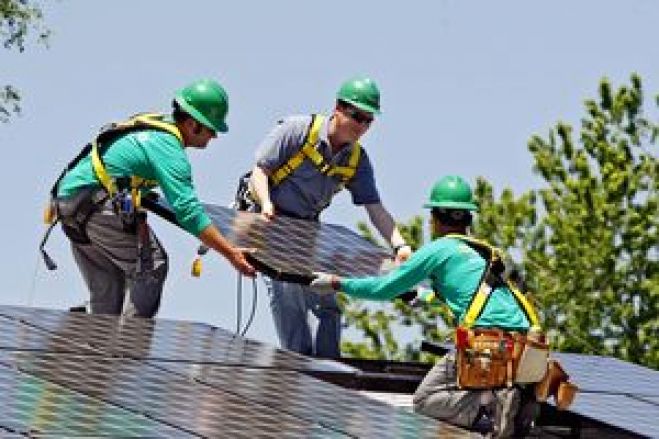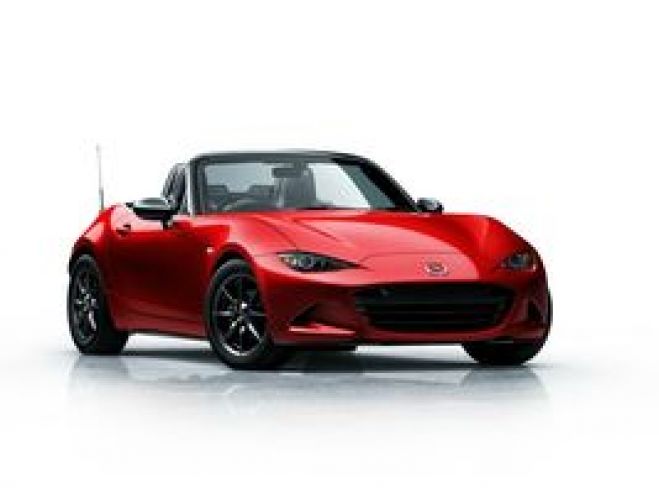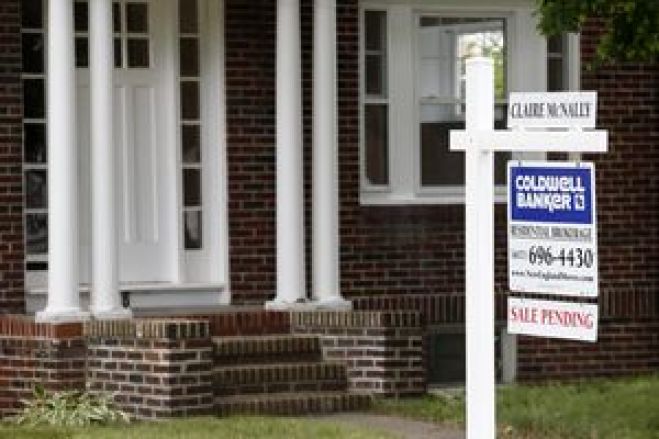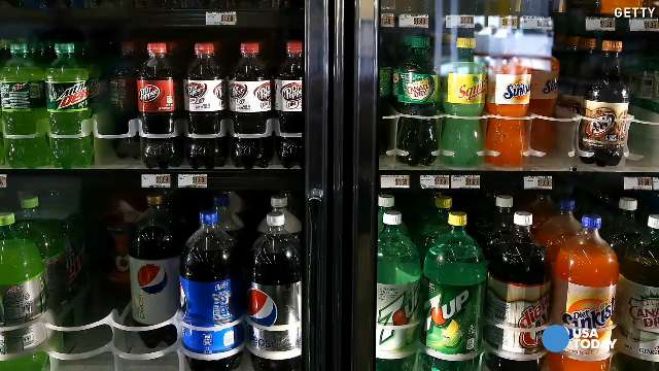SolarCity to create 600 jobs in seven states
U.S. Senator Michael Bennet, D-Colo., center, helps as SolarCity employees Jarret Esposito, left, and Jake Torwatzky, install a solar panel on a home in south Denver. SolarCity, one of the nation's largest installers of rooftop solar systems, on Tuesday, June 17, 2014 announced it is buying Silveo, a solar panel manufacturer.(Photo: Ed Andrieski AP)SolarCity, the dominant U.S. installer of residential solar panels, announced Thursday that it is continuing to expand by opening 20 new operation centers in seven states by the end of this year.The San Mateo, Calif.-based company, which leases rooftop systems with little to zero upfront costs, said it more than tripled its number of new customers in 2014's second quarter compared to the same period a year ago.Investors welcomed the expansion news, sending the price of SolarCity's SCTY[1] stock up more than 5% in midmorning trading to $71.43. It closed up 4.8% at $70.95.SolarCity said it expects the new regional operations centers will create more than 600 additional jobs in Arizona, California, Delaware, Maryland, Massachusetts, Nevada and New York. It said they will cut costs by decreasing service and installation drive times.The company, whose largest shareholder is entrepreneur Elon Musk, has been rapidly expanding and taking bold steps. In June, it announced it would acquire solar panel maker Silevo[2] and expand into manufacturing with new panel factories.Musk, also CEO of electric car maker Tesla Motors TSLA[3], said the Silevo acquisition will enable SolarCity to produce efficient, low-cost panels in volumes large enough to ensure its supply. The company aims to build in New York state, within two years, one of the world's largest solar panel factories."If we don't do this, we thought there was a risk of not being able to have the solar panels we need to expand our business in the long-term," Musk told reporters.Separately,…
Read more...













